Solutions to REFS_FILE_SYSTEM here will guide you to fix this Blue Screen of Death issue in Windows 10. This BSOD problem with bug check value 0x00000149 indicates an error that occurs in the File System. You will experience irregular flashing on display in your system when this trouble comes on your computer. In addition, freezing of desktop is quite frequent with automatic Restarting of Windows.
REFS FILE SYSTEM Error BSOD Windows 10 occurs mostly when the system resources go missing or the drivers are found outdated. Furthermore, Losing System components can take place because of malware attack or conflict between similar programs. Few other software issues like incorrect memory allocation, defective windows images, and missing DLL files come out responsible for the issue. Also, in the Hardware side, presence of bad areas in RAM, HDD itself, low storage space, even sometimes after an additional Hard Disk can evolve the error. Case history reveals, the issue is very dangerous and may even cause permanent damage to the system. Therefore, today we will discuss workarounds for resolving REFS_FILE_SYSTEM Error BSOD. Let’s see the list of resources first –
Now follow the methods –
Table of Contents
REFS_FILE_SYSTEM Error Windows 10 Solutions
Here is how to fix REFS_FILE_SYSTEM Error BSOD Windows 10 –
1] Disable Automatic Windows 10 Restart
When the device is diagnosed with REFS_FILE_SYSTEM Error, it will go through various abnormal actions. Among them, Automatic Restarting will annoy most. You can neither get time to come to a conclusion about trouble nor can resolve. However, we can easily disable this activity. Here isn’t how to do the task –
- Press Win+D and directly head to the desktop area.
- On this location, make a click on This PC icon.
- Choose Properties option from the appearing menu.
- When the System window unrolls, select Advanced system settings link Lying on the left side.
- In a moment, System Properties popup window will open up.
- Jump into its Advanced tab.
- In the current tab, navigate to Startup and Recovery area and hit a click on Settings option.
- Once another popup wizard shows up, go to the System failure area.
- Now, uncheck the box ahead of Automatically restart.
- Lastly, hit the Ok button from the bottom to save changes and leave.
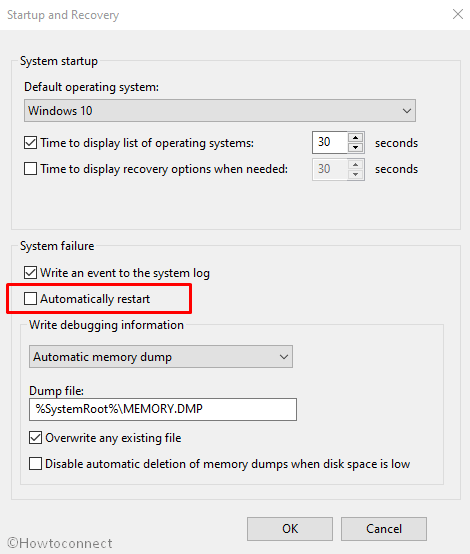
Once the changes are saved in Windows, it will never prompt to restart automatically. Hence, you can have ample scope to apply further workarounds.
2] Update all the drivers in Device Manager Platform
Case study relates, most of the BSOD errors have the same root cause. That is either the device drivers are defective, incompatible or it is left outdated for a long. Thus, it’s an utmost duty to update all those drivers. Device Manager would be the right platform to accomplish the task. The reason is, you can see them in Yellow indication and that makes the work easier. Follow the below procedure to complete the task –
- Right click on Start icon and select Device manager from the list of options.
- Now, have a sharp Check on the console and try finding out any mark of exclamation in any device.
- If you find any, expand the same by clicking it.
- Upon spreading the drivers’ list, look for one having Yellow triangular warning mark.
- Once identified, perform a right-click on those in the process.
- Select Update driver option and let windows to start updating.
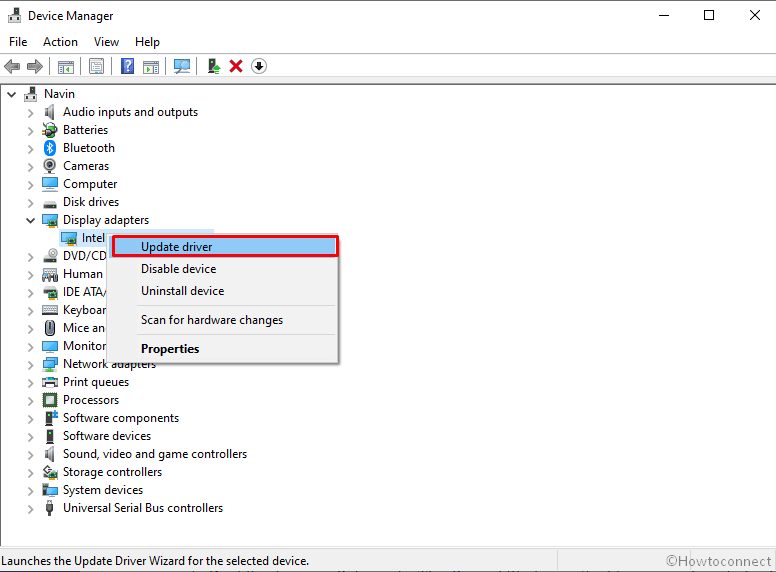
3] Load the Basic Processes only by Booting Windows in Safe Mode
From the very starting, whenever there was an issue about Windows, booting in safe mode came as the rescuer. BSOD errors are now one of the biggest trouble in the Operating System. Like the past times, we are going to Boot the device in Safe mode. This Special Startup method forces windows to load only basic services. The trick does rest and resolve the issue in most cases. Here is how to proceed –
- Open the Start menu by making a click on the icon located at the bottom left end of Desktop.
- Now using the keyboard, type MSConfig text.
- When System Configuration arrives in the result, select it to launch.
- In the appearing window next, switch between tabs and reach Boot.
- In the ongoing tab, reach to second half titled as Boot options.
- Here, check the box for “Safe boot” and make the inactive options visible.
- Proceeding ahead, when the radio buttons beside Minimal.
- Hit the Apply button from down and also Ok afterward.
- Leave these tabs once the changes are saved.
- Open the Start menu again in the same way before.
- Perform a click on Power Cog. and select Restart.
- Windows will prepare for the rebooting initially.
- Once the startup is booting after completing the cycle of restarting, start pressing F8 key frequently.
- When you come across the subsequent window, hit the Safe Boot options located in the Advanced boot options.
- Enter the Safe Boot Mode in consequent step.
4] Uninstall similar programs causing REFS_FILE_SYSTEM Error BSOD
When similar programs stay over in the same Windows 10, they may engage in conflicts. As a result, necessary OS files are deleted from the system. That may lead to BSOD errors quite often. As for resolution, you may need to uninstall them. The process is as follows-
Step-1: Open the Settings app pressing Win+I hotkeys together.
Step-2: When in the App homepage, make a click on Apps and pass forward to the next page.
Step-3: Once the consequent window appears, select Apps & features from left pane.
Step-4: Straightway navigate to right and look for similar programs in the list of installed apps.
Step-5: Perform a click on each and choose Uninstall from extended pane.
Step-6: When User Account Control asks for approval, hit Yes to give consent.
Step-7: Follow on-screen guidelines to completely remove the programs.
Step-8: When the process gets over finally, Restart the device.
Step-9: Do perform a check for REFS_FILE_SYSTEM Error BSOD in the system when sign back in again.
Step-10: If nothing comes ahead, you can install the removed app in case necessary.
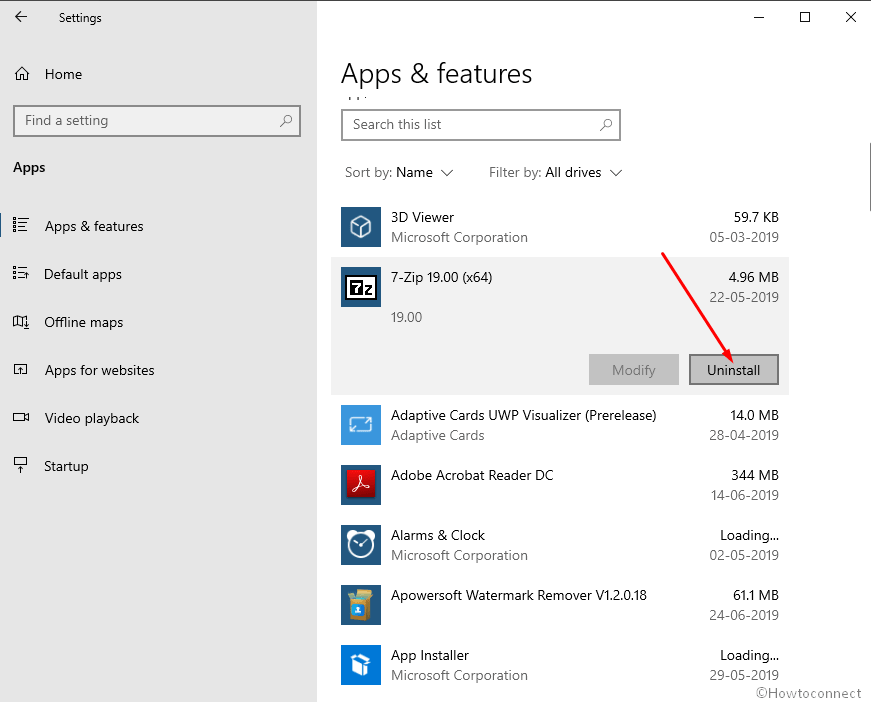
5] Detect and dismiss threats in Windows Security
We are no longer safe from malware and they are available everywhere we visit. Sometimes they live in disguise in the system through suspicious links in spam mails. Irrespective of source, they are responsible for removing necessary components for Operating System. So BSOD error such as REFS_FILE_SYSTEM Error BSOD occurs. To reduce the risk, full malware scanning is important on a regular basis. See the detailed process below –
- Roll the pointer to the right side of Taskbar and make a click on Show hidden icons.
- When the menu opens up, select the Shield icon and let Windows Security open it in a separate window.
- Choose Virus & threat protection from left overlay.
- On the corresponding right, do a click on the link entitled with Scan Options.
- Once displayed, choose the radio button ahead of Full scan from there.
- Select Scan now button to begin identifying.
- When the process ends, you will see the result about threats and malware on display. Now, click Clean threats when the utility traces out some virus.
- Moving ahead to the next page, three option will be there for you. Choose Remove and at the same time; hit a click on the Start actions button to dismiss them from the computer.
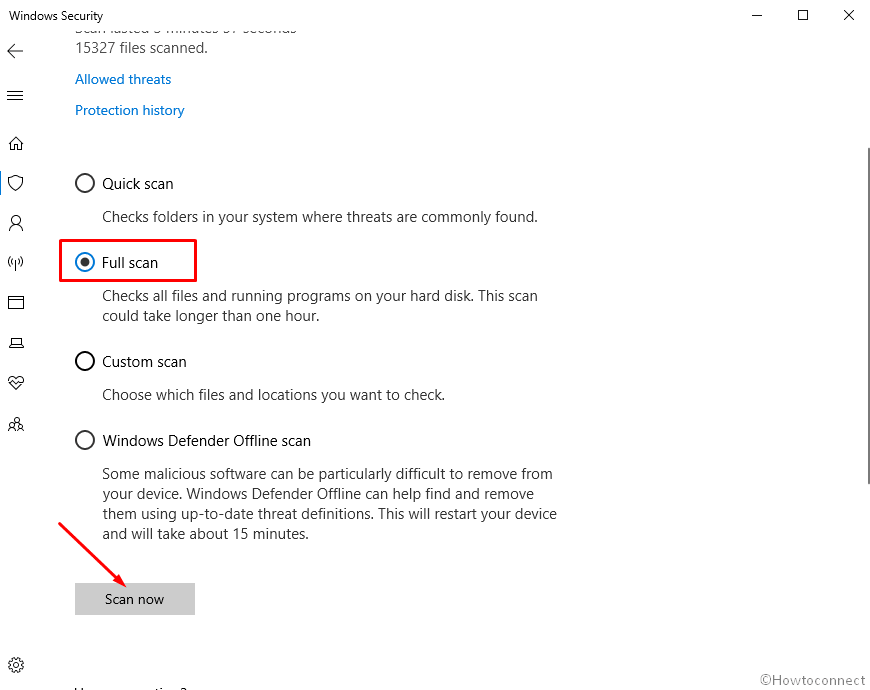
6] Execute System File Checker in Elevated Command Prompt to recover missing resources
There can be so many reasons for which corruption in the system resources can happen. When the action meets with missing DLL files, altogether causes REFS_FILE_SYSTEM Error BSOD. To recover these resources, we have a very fine tool executed in the Elevated Command Prompt. Over the past, The System File Checker did this task perfectly. Let’s use the tool once more following the below guidelines –
- Press Windows key and S together and call up Taskbar Search.
- In the box available for typing text, write cmd.exe.
- When the result appears, do a right click on Command Prompt.
- Choose Run as Administrator from menu.
- Once UAC asks permission to make changes, hit Yes to give consent.
- In the next black window, type
SFC /Scannowat the base of the blinking cursor. - Press Enter key and let System File Checker to take action.
- This process will detect and fix system file corruption automatically.
- The process will take longer so be patient and wait for it to be over by its own.
- Perform Reboot to windows after ending the method.
- When returning back again, carry out a check for the occurrence of this Blue screen of death error.
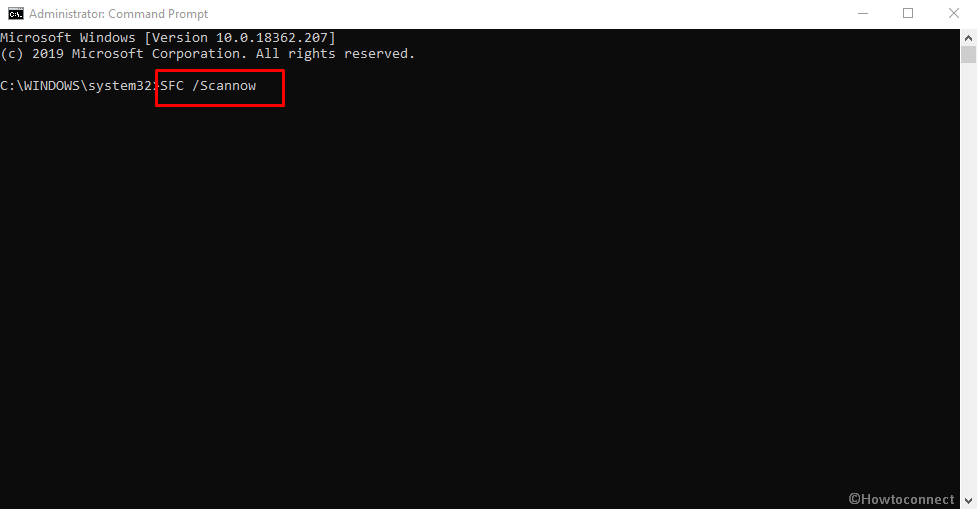
7] Disconnect the additional Hard Disk and reconnect once error resolves
People often found reporting that they are getting BSOD error after connecting external Hard Disk. Fortunate that, some users have resolved the issue just by disconnecting them and reconnecting later on. Here is the way to march up –
- First, remove the additional Hard Disk from ports and leave in a safe place.
- Press the Windows button and on expanding the Start menu, hit Power Cog.
- Choose Restart option and let it reboot.
- After completing the cycle of rebooting, perform a general check to see if there is an issue present.
- If nothing shows up about the Blue screen error, you are on the safe side.
- Launch the default browser and in the process visit manufacturer website for the HDD.
- Download and install all the latest drivers in the system.
8] Update Windows 10 by installing all the patches
All the patches that Microsoft releases at a regular interval, contains fixing of bugs. An outdated Windows 10 usually can get affected by bugs easily. Therefore, leaving those patches pending won’t be wise. You need to take immediate action to download and install all the available patches. See the guidelines below –
- Combine press Win+I hotkey and invoke Windows settings app.
- While in the App accessible area, head to Update & Security and perform a click on it.
- On the following page, select Windows Update located at the left-hand side.
- Go to the right side; you might notice the dialog “You’re up to date”. Click on “Check for updates”.
- Select the Download button under each of these.
- Installation will take place automatically.
- Windows will prompt for Restarting onwards, attend all the requirements in the process.
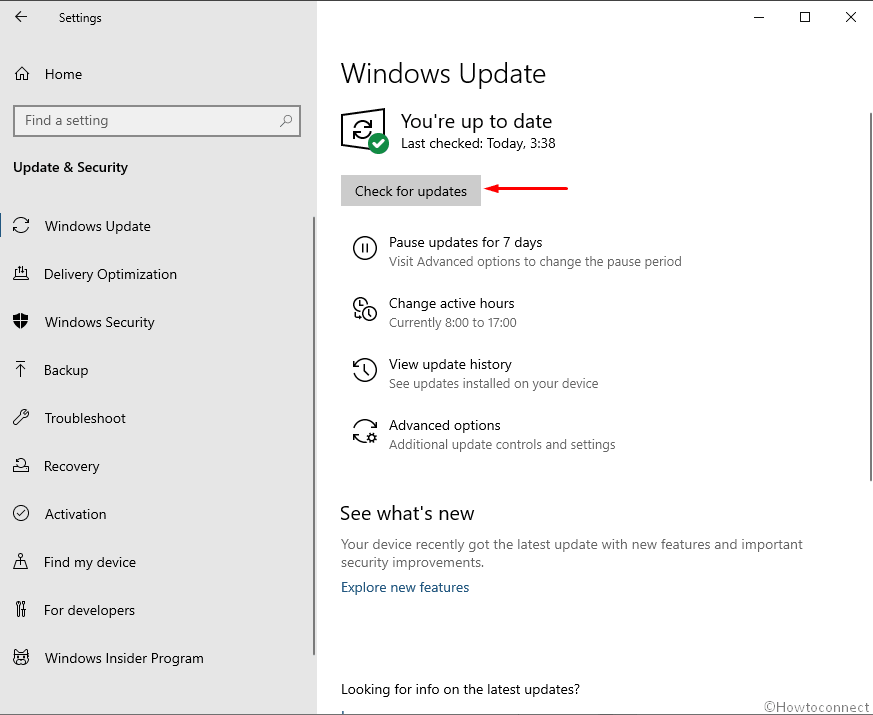
Once the Windows is up to date, there might not be any BSOD error in the system.
See – 4 Ways to Update Windows 10
9] Resolve all the existing issues in memory
Bad areas in Random access Memory, wrongly allocated areas all together termed as problems in memory. When these happen, you might get REFS_FILE_SYSTEM Error. Well, the resolution is very simple when you take help of Windows Memory Diagnostic. You have to progress as below –
Step-1: Launch the Windows Settings.
Step-2: After moving to the app area, you will find a search box. Type memory in the gap.
Step-3: Select the option saying “Diagnose your computer’s memory problems” and let windows to launch the Diagnostic.
Step-4: From the appearing wizard, select “Restart now and check for problems (recommended)” option to march on.
Step-5: It will make the windows to restart first. When signing back next, a blue screen will detect memory issues.
Step-6: Once the progress hits 100 %, windows will prompt to restart for the second time.
Step-7: When the desktop is back in appearance, check the result of diagnosis in the notification area.

10] Uninstall Windows Update files terminated abnormally
Usually, the Windows Update system done through settings app doesn’t end in disruption. The process is clearly automatic when done in the presence of an active internet connection. Still, sometimes they terminate halfway when installing and the act may lead to REFS_FILE_SYSTEM Error. To escape from the consequence, uninstalling these defective files is necessary. Move with the below guidelines to uninstall them –
- Press Windows and I keys and let the system open the Settings app.
- When in the App home, click on Update & Security.
- When passed to the succeeding page, select Windows update and jump to right eventually.
- In due course, select View update history link located here.
- After then, click on the Uninstall updates link.
- By default, this will open up Installed Updates from Control Panel.
- Now, in the current window, move out for recent patch in the list.
- Do a right click on it and choose Uninstall to proceed.
- Keep following the guidelines on display until these removed completely.
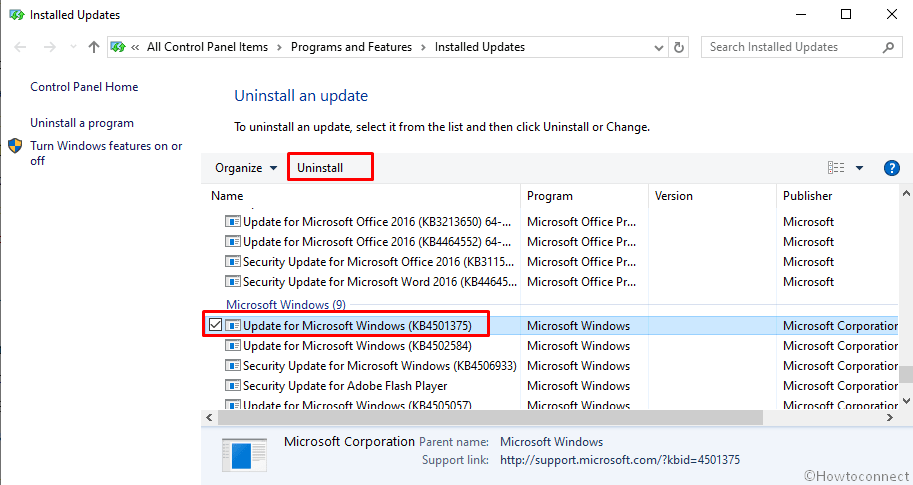
11] Delete Junk files using Disk Cleanup tool and free up space
For the accomplishment of a task, the system creates junk files every time. These are temporary files and make no use after the task. As they are stored in the disk storage, if not cleared timely can occupy large space. In the process, Hard Disk runs in low space and device to slow down. There is a sharp risk of evolving stop errors as well. We have to clean these files regularly using the following guidelines –
- Press Windows and R keys together and invoke Run dialog.
- Type cleanmgr.
- Press Enter key eventually.
- With the action, a small dialog box will flash on the screen. It will ask for the drive where cleanup will be carried out.
- Select C: and hit Ok button as well.
- Primarily, Disk Cleanup utility will begin to figure out the retrievable space in the drive.
- After calculation, a popup window will be available. Proceed to the bottom left end here.
- Select Clean up system files.
- The same Small popup dialog box will ask the drive again. Select C: in the same way you did previously and hit Enter key.
- After Disk Cleanup for C: appears as a wizard, come down to its Files to delete section.
- Check all the boxes only except Downloads.
- Finally, hit Ok button and start freeing up space.
- Once the process ends, perform a Restart to the windows and after returning to operation, see if the issue present.
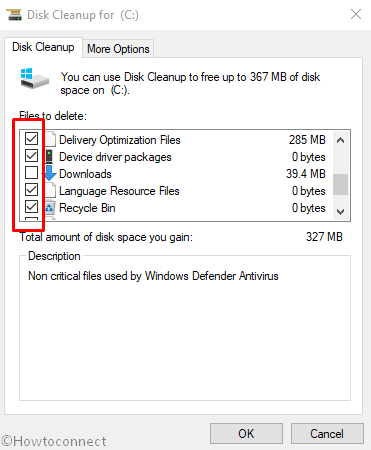
12] Fix up Windows image files using DISM Tool
Deployment Image Servicing and Management tool (DISM) is a powerful utility for making the Windows Image Files flawless. As these faulty image files cause REFS_FILE_SYSTEM Error BSOD as well, we need to use the tool to fix them up. See the below procedure –
- Open the Command Prompt with Administrative privileges.
- In the black window, type following command –
DISM.exe /Online /Cleanup-image /Restorehealth
- Hit the Enter button to activate the command line tool.
- The tool will start working immediately and will rectify automatically if any problems come in the path.
- This whole process might take 10 minutes and more. Wait patiently to finish finally.
- Once done, Reboot the system and after powering up, check of the error exists.
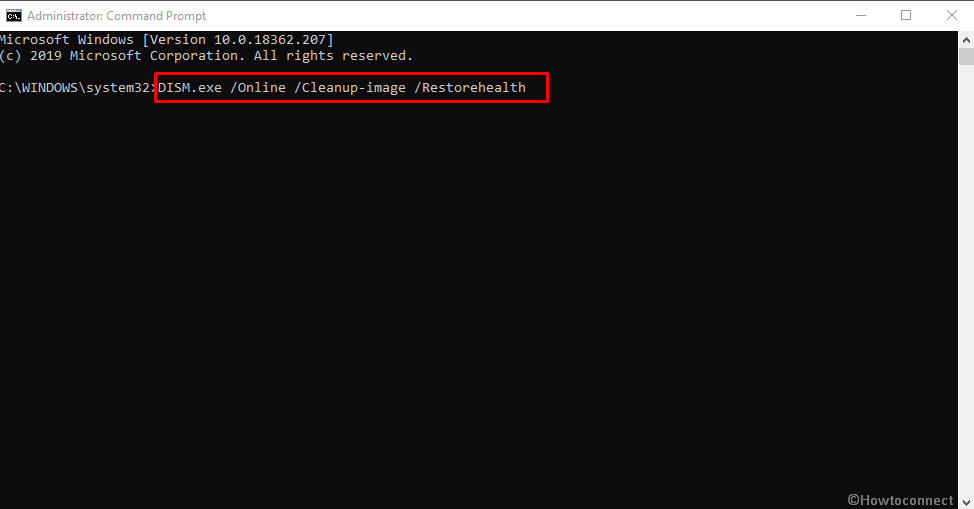
13] Settle the bad segments of HDD using Disk Checking Tool
BSOD error like REFS_FILE_SYSTEM can evolve anytime when the Hard Disk itself suffers from poor areas. However, we can easily fix these by running the Disk Checking utility. The tool runs in the Elevated Command Prompt only. Let’s have a look in the procedure –
- Launch Elevated command prompt.
- In the black window, type the command in the syntax –
chkdsk C: /f /r /x. - Hit Enter button from keyboard to execute the Disk Checking utility.
- This process might also take longer. Hold the breath and wait until the process ends.
- Restart device once finished the process.
- When the device Turns On after completing the cycle, see if the error exists.
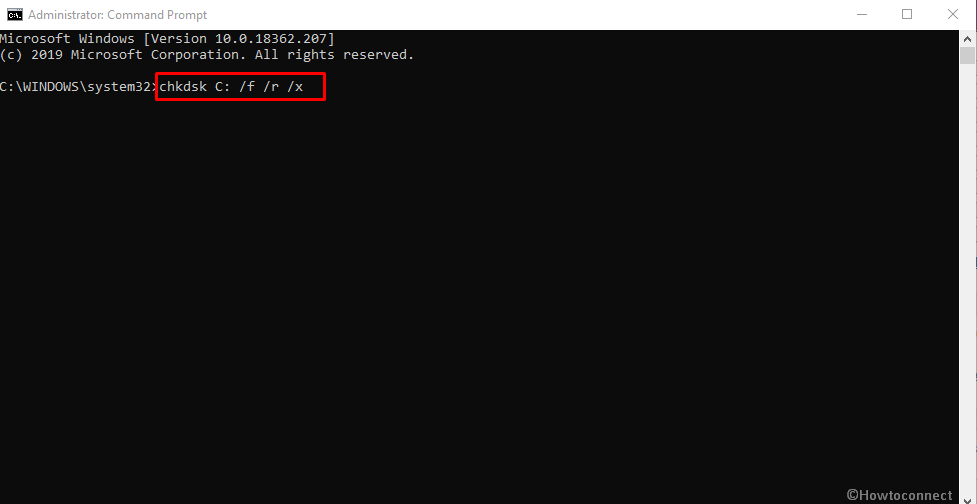
14] Return back to an earlier state by performing System Restore
Tasks, like installing a program or removing another, might cause disruption in normal operation. If you have come across REFS_FILE_SYSTEM Error BSOD after such changes, need to return back to the previous state. This is the easiest trick to avoid the issue. This process has a demand for previously created Restore Point. If you are not familiar with such term, can skip this process here and move on to next. Proceed with following if you have already a point like that –
- Invoke Run dialog first using any convenient way.
- Once it flashes in the display, type rstrui in the blank search box.
- Hit Enter key and call in System Restore wizard.
- Moving ahead to wizard, select Next option.
- When the succeeding window loads, make a click on Show more restore points.
- Select the latest point and hit Next button.
- After the following page cuts your view, select Finish.
15] Uninstall Third Party Anti-virus Tool from Windows
Malware in the system forces the necessary components to miss out and BSOD evolves in it. You can use a third-party antivirus program usually for defending them. But for now, we have Windows Security beforehand. This can serve you better, furthermore, this is a default utility in Windows 10. Using any of those apps are unnecessary and also there is a possibility of facing REFS_FILE_SYSTEM Error BSOD. Therefore, uninstalling them will be the easiest solution. Move with below instructions –
- Open the Taskbar Search pressing Win+S keys together.
- Type appwiz.cpl in the empty area.
- Press Enter key to launch Program and Feature Window.
- In the appearing window, reach out to the Third Party Antivirus program listed there.
- Select the application and hit Uninstall option visible in the top ribbon.
- Follow the on-screen guidelines to remove it completely.
Above discussed are the collection of most effective workarounds to fix REFS_FILE_SYSTEM Error BSOD in Windows 10. Hope these have worked for you and have already fixed the issue. There might be exceptions also and you can be failed to resolve. In that case, we can suggest the last resort. This is to perform Clean Installation of Windows 10.
While taking preparation for this task, make sure the computer is connected with a speedy internet connection. Never forget to save a backup for all the necessary items in the system and preferably take it out carrying in USB or external drive. Hope this time you will succeed resolving REFS_FILE_SYSTEM Error BSOD Windows 10.
Methods:
1] Disable Automatic Windows 10 Restart
2] Update all the drivers in Device Manager Platform
3] Load the Basic Processes only by Booting Windows in Safe Mode
4] Uninstall similar programs
5] Detect and dismiss threats in Windows Security
6] Execute System File Checker
7] Disconnect the additional Hard Disk
8] Update Windows 10 by installing all the patches
9] Resolve all the existing issues in memory
10] Uninstall Windows Update files terminated abnormally
11] Delete Junk files using Disk Cleanup tool and free up space
12] Fix up Windows image files using DISM Tool
13] Settle the bad segments of HDD using Disk Checking Tool
14] Return back to an earlier state by performing System Restore
15] Uninstall Third Party Anti-virus Tool from Windows
That’s all!!
